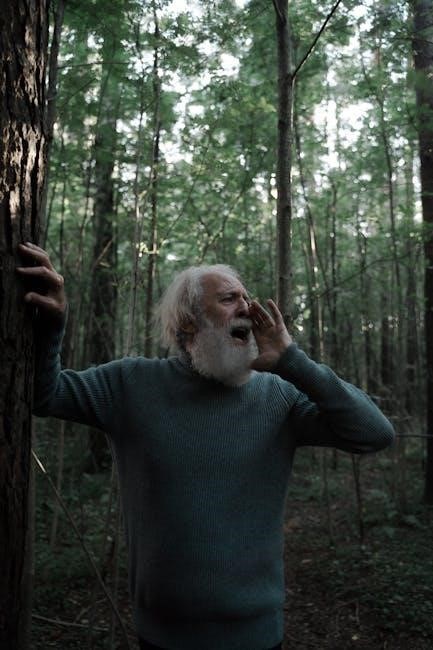
The Drama Triangle and How to Escape It: A Comprehensive Guide
This comprehensive guide delves into the intricacies of the Drama Triangle, a model illustrating dysfunctional social interactions․ Understanding the Victim, Rescuer, and Persecutor roles is key․ Learn strategies for self-awareness, communication, and empowerment to escape repetitive, unsatisfying patterns․ Transform relationships and foster positive outcomes!

The Drama Triangle, conceptualized by Stephen Karpman in 1968, offers a framework for understanding unhealthy and manipulative relationship dynamics․ It illustrates how individuals unconsciously adopt specific roles—Victim, Rescuer, and Persecutor—leading to repetitive and emotionally charged interactions․ This model, rooted in Transactional Analysis developed by Eric Berne, highlights the dramatic roles people enact in daily life, often resulting in misery and discomfort for all involved․
The Drama Triangle’s power lies in its ability to illuminate hidden patterns within relationships, both personal and professional․ By recognizing these patterns, individuals can begin to understand their own contributions to dysfunctional cycles․ The triangle isn’t about assigning blame; it’s about understanding the roles and how they perpetuate conflict․ This model underscores the loss of independence and cognitive biases that contribute to codependent thinking and behaviors, particularly relevant in workplace settings․
Ultimately, the goal is to become aware of these roles, step out of the triangle, and foster healthier communication patterns․ This involves moving beyond blame and guilt, embracing responsibility, and promoting empowerment rather than victimization․ By understanding and addressing the Drama Triangle, individuals can unlock new opportunities for personal and professional growth, leading to more fulfilling and balanced relationships․
Understanding the Three Roles: Victim, Rescuer, and Persecutor

The Drama Triangle consists of three distinct roles: the Victim, the Rescuer, and the Persecutor․ The Victim feels oppressed, helpless, and unable to make decisions or solve problems․ They often seek validation and support from others, but their perceived powerlessness can trap them in a cycle of dependency․ They may avoid taking responsibility for their own circumstances, instead blaming external factors or other people for their misfortunes․
The Rescuer, driven by a need to help, intervenes in situations where they are not needed or asked․ They often feel compelled to “save” the Victim, even at their own expense․ While their intentions may be good, Rescuers enable the Victim’s dependency and prevent them from learning to solve their own problems․ They derive a sense of self-worth from being needed, but this can lead to burnout and resentment․
The Persecutor is controlling, critical, and often blames others․ They set strict rules and expectations, and they are quick to judge and punish those who don’t meet them․ The Persecutor’s behavior stems from their own insecurities and fears, which they project onto others․ While they may believe they are acting in the best interests of everyone involved, their actions often create a climate of fear and resentment․
How the Drama Triangle Manifests in Relationships and Workplace
The Drama Triangle can significantly impact both personal relationships and the workplace environment․ In relationships, it often surfaces as a cycle of conflict where partners rotate between the Victim, Rescuer, and Persecutor roles․ For example, one partner might consistently play the Victim, feeling helpless and blaming the other for their problems․ The other partner, acting as the Rescuer, tries to fix everything, eventually becoming resentful and shifting into the Persecutor role, criticizing and controlling their partner․
In the workplace, the Drama Triangle can manifest in several ways; A colleague might consistently play the Victim, complaining about their workload and seeking sympathy․ Another colleague, acting as the Rescuer, takes on their tasks, leading to burnout and resentment․ Meanwhile, a manager might adopt the Persecutor role, micromanaging employees and creating a stressful environment․ This dynamic can lead to decreased productivity, increased conflict, and a toxic work environment․

The Drama Triangle fosters unhealthy communication patterns and hinders genuine problem-solving․ Recognizing these roles in your interactions is the first step toward breaking free and creating healthier relationships and a more positive work environment․
Transactional Analysis and the Drama Triangle
The Drama Triangle is rooted in Transactional Analysis (TA), a theory of personality and social interaction developed by Eric Berne․ TA examines interactions between individuals in terms of “ego states”: Parent, Adult, and Child․ The Drama Triangle highlights dysfunctional interactions where individuals operate from imbalanced or unhealthy ego states, leading to repetitive and unsatisfying patterns․
In the Drama Triangle, individuals often engage in “games,” which are unconscious, repetitive patterns of interaction designed to elicit a predictable, negative outcome․ These games reinforce pre-existing beliefs and feelings about oneself and others․ For example, a person in the Victim role might unconsciously seek out a Persecutor to confirm their belief that they are powerless and unworthy․

Understanding TA provides a framework for analyzing the underlying psychological dynamics of the Drama Triangle․ By identifying the ego states and games involved, individuals can gain insight into their own behavior and the behavior of others․ This awareness is crucial for breaking free from the Drama Triangle and developing healthier, more authentic relationships based on genuine communication and mutual respect․ Recognizing and addressing these patterns allows for more fulfilling interactions․
The Karpman Drama Triangle
The Karpman Drama Triangle, formalized by Stephen Karpman in 1968, is a model of dysfunctional interaction․ It identifies three distinct roles that individuals cycle through: the Victim, the Rescuer, and the Persecutor․ These roles are not static; individuals often shift between them within a single interaction or relationship, creating a dynamic of conflict and instability․
The Victim feels helpless and oppressed, often seeking someone to blame or rescue them․ The Rescuer intervenes to save the Victim, often at their own expense, perpetuating the Victim’s dependence and avoiding their own issues․ The Persecutor is controlling, critical, and blames others, often justifying their behavior by pointing to the Victim’s shortcomings․
This triangle represents a “game” in the Transactional Analysis sense, an unconscious pattern of interaction with a predictable, negative payoff․ The Karpman Drama Triangle is characterized by a lack of genuine communication, unmet needs, and a cycle of blame and resentment․ Recognizing one’s role in the triangle is the first step toward escaping its destructive influence and fostering healthier relationships․ The roles are driven by underlying anxieties and insecurities․

Identifying Your Role in the Drama Triangle
Self-awareness is paramount to escaping the Drama Triangle․ Ask yourself: Do you frequently feel like a victim, blaming external circumstances for your problems? Do you often step in to rescue others, even when they haven’t asked for help, potentially neglecting your own needs? Or, do you tend to be critical and controlling, finding fault with others and taking on a persecutory role?

Reflect on your interactions․ Do you find yourself repeatedly drawn into conflicts where these roles are evident? Do you have a pattern of feeling drained or resentful after certain interactions? Recognizing these patterns is crucial․ Consider your motivations․ Are you seeking validation through rescuing, avoiding your own issues by blaming others, or feeling powerless and seeking attention through victimhood?
Keep a journal to track your interactions and emotional responses․ Look for recurring themes and identify the roles you tend to play․ Be honest with yourself; this is a journey of self-discovery․ Understanding your triggers – the situations or behaviors that prompt you to fall into a specific role – is also essential․ This self-reflection is the first step toward breaking free from the Drama Triangle’s grip․
Strategies for Escaping the Drama Triangle: Self-Awareness
Escaping the Drama Triangle begins with cultivating profound self-awareness․ This involves a deep dive into understanding your emotional triggers, behavioral patterns, and underlying needs․ Begin by consciously observing your reactions in various situations, especially those involving conflict or interpersonal tension․ Identify the specific thoughts, feelings, and physical sensations that arise when you feel drawn into a familiar role – Victim, Rescuer, or Persecutor․
Journaling can be an invaluable tool in this process․ Regularly record your interactions, focusing on your role and the roles of others involved․ Analyze these entries to discern recurring patterns and identify situations that consistently trigger your Drama Triangle tendencies․ Pay close attention to your internal dialogue․ Are you engaging in self-blame, making assumptions about others’ intentions, or minimizing your own needs?
Furthermore, explore the origins of these patterns․ Consider how your past experiences, family dynamics, and learned behaviors may contribute to your predisposition toward certain roles․ Understanding the roots of your Drama Triangle involvement can provide valuable insights and pave the way for lasting change․ Cultivating mindfulness through meditation or other practices can enhance your self-awareness by fostering a greater ability to observe your thoughts and emotions without judgment․

Strategies for Escaping the Drama Triangle: Communication Techniques
Effective communication is paramount for escaping the Drama Triangle․ One essential technique is assertive communication, expressing your needs and boundaries clearly and respectfully, without resorting to aggression or passivity․ Practice using “I” statements to convey your feelings and experiences without blaming or accusing others․ For example, instead of saying “You always make me feel․․․”, try “I feel․․․ when․․․”․
Active listening is equally crucial․ Fully engage with the speaker, paying attention to both their words and their nonverbal cues․ Seek to understand their perspective, even if you disagree․ Ask clarifying questions to ensure you’re accurately interpreting their message․ Resist the urge to interrupt or formulate your response while they’re still speaking․
Non-violent communication (NVC) offers a structured approach to expressing yourself authentically and empathetically․ NVC emphasizes identifying your observations, feelings, needs, and requests․ By focusing on these elements, you can communicate your message in a way that minimizes defensiveness and promotes understanding․ Another important skill is learning to say “no” without guilt or justification․ Setting healthy boundaries is essential for protecting yourself from being drawn into Drama Triangle dynamics․ Remember, you have the right to prioritize your own well-being․

Moving Beyond the Drama Triangle: The Empowerment Dynamic (TED)
The Empowerment Dynamic (TED) offers a positive alternative to the Drama Triangle, providing a framework for healthy and empowering interactions․ TED replaces the Victim, Rescuer, and Persecutor roles with the Creator, Coach, and Challenger roles, respectively․ The Creator takes responsibility for their own life and focuses on desired outcomes rather than feeling helpless․ They proactively seek solutions and embrace challenges as opportunities for growth․
The Coach, instead of rescuing, supports and encourages others to find their own solutions․ They empower individuals to tap into their own resources and develop their capabilities․ A Coach asks powerful questions, offers guidance, and provides constructive feedback, fostering self-reliance and problem-solving skills․

The Challenger, rather than persecuting, provides honest and direct feedback to help others identify and overcome obstacles․ They challenge limiting beliefs and push individuals to reach their full potential, doing so with respect and empathy․ The Challenger encourages accountability and inspires growth, creating a positive and supportive environment for change․ By embracing the TED roles, individuals can break free from the Drama Triangle and cultivate healthier, more fulfilling relationships․